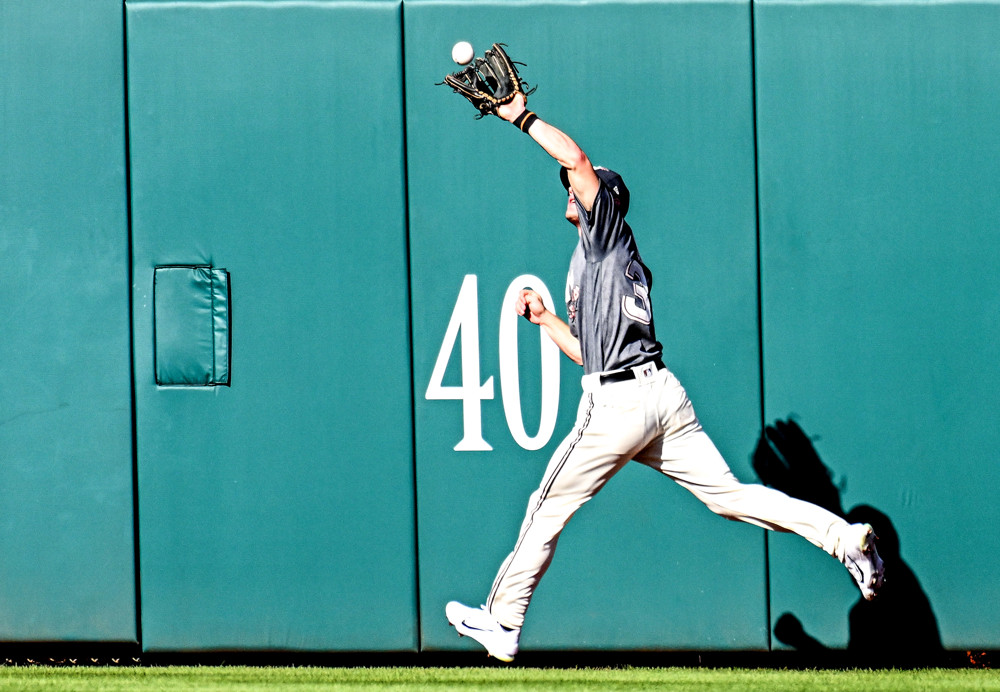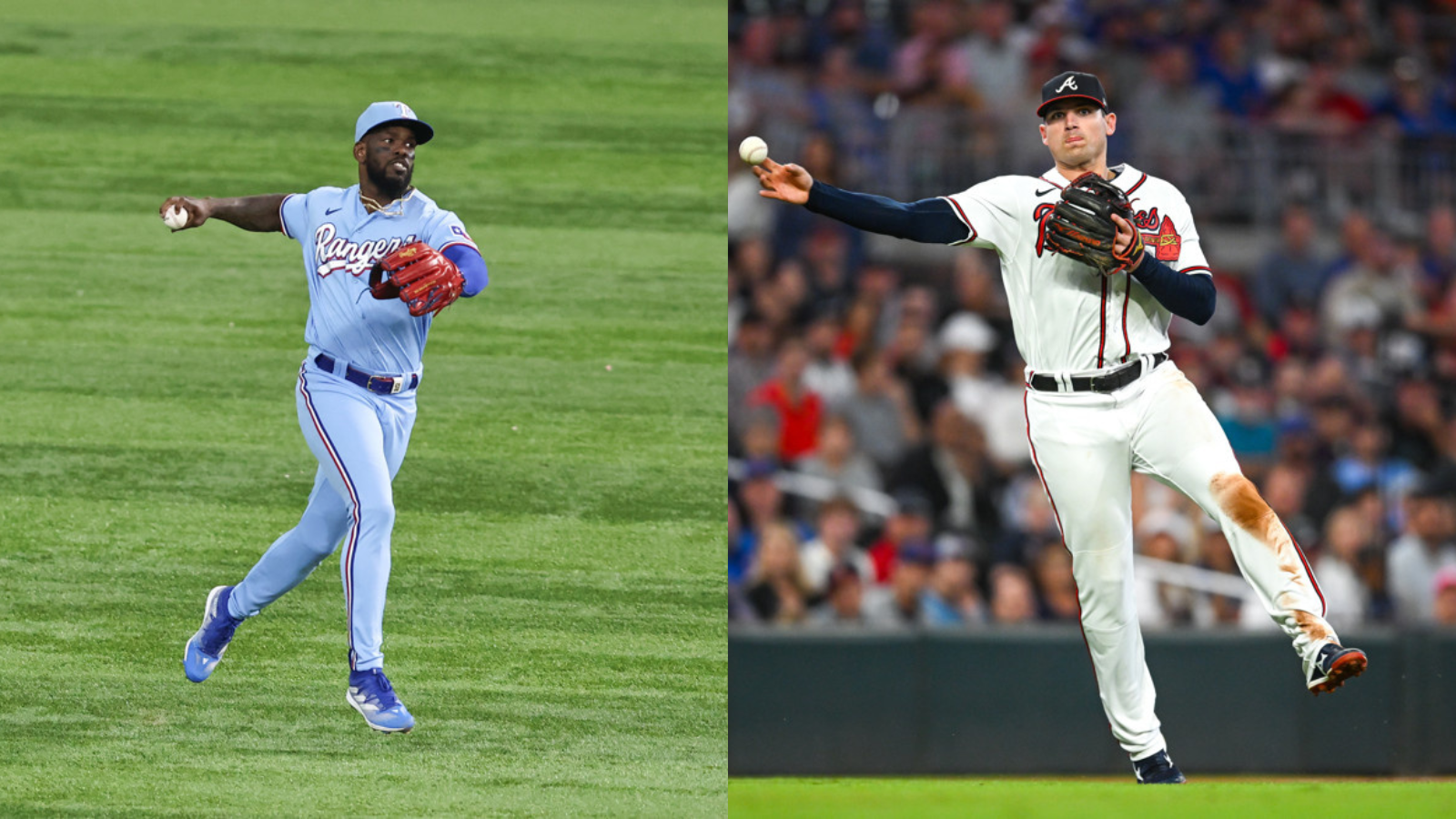Cardinals outfield prospect Victor Scott II was one of the stars of the Arizona Fall League with a .388 on-base percentage and 18 steals in 23 games. That came after a very strong year split between High-A and Double-A in which he hit .303 and stole a combined 94 bases. Baseball America just named him the Cardinals No. 3 prospect, as well as their best defensive outfielder, fastest baserunner, and best athlete among their minor leaguers. On Tuesday, he was named the winner of a Rawlings Minor League Gold Glove Award.
We spent a good part of 2023 talking to coaches about teaching defensive excellence. So it makes sense that we start talking to players about what it looks like to learn defensive excellence. Victor is the first in what we hope will be an ongoing series of interviews.
Mark: Where did it all start for you defensively?
Victor: I was probably 10 to 12 years old and my dad would take me to a local park.
He would hit fungos, ground balls, fly balls, but he would hit them everywhere. It could be a pop to left center. It could be ground balls. If I ever bobbled it or dropped it, it would be a 50-push-up penalty.
That made me start taking pride in my defense, because I didn’t want to do 50 push-ups every single time I made a mistake or if I didn’t get to it, or if I didn’t get the best jump to it, I didn’t want to do 50 push-ups. I organized myself so that I could get to the ground ball, or the fly ball that was 20 or 30 yards away.
Mark: What was the hardest thing to learn as a kid?
Victor: That with defense, speed is a big factor, but you’re going to need to be able to get a good jump and be able to read a swing. The first stage for me was understanding how a swing works or where the pitch is going to be and how to move off that.
Mark: You learned the ins and outs of center field in Little League?
Victor: Yeah, and then also I was just using sheer athleticism at that point.
I like to refer to the center fielder as a point guard. You’ve got control pretty much over the whole field from a bird’s eye view because you’re behind everybody.
You’re the last line of defense. Essentially, you’re just the general. You can call off anybody. Nobody has rank over the center fielder.
Mark: When you made the transition from college to the pros, what’s the difference in terms of how you are as a center fielder now?
Victor: I would say A, reading swings, and B, knowing the game more. Knowing situations, knowing where to throw the ball before it even is hit. It’s the imagination component. Because I know in college, I was just out there being athletic, playing the game, still like refining what it means to be like a center fielder, and then as I got to pro ball just working on different things, being able to really then understand what I was doing, how to get the best jumps, game situations, all those things put a blend together in order to form a pretty decent year
Mark: How did you figure out how to use your speed such that you wouldn’t overuse it?
Victor: Yeah, it’s just learning how to control your body essentially. With fly balls and ground balls, it’s normally getting to a spot. So you would be technically underusing it if you drifted to the ball and then you would be overusing it if you were to sprint to the wrong spot.
It’s just making sure that you have a feel for where the ball is going to end up and how you’re going to get there.
Mark: Who were your favorite players?
Victor: Andrew McCutchen, Byron Buxton, Mookie Betts. As I kept growing up Byron became one of my favorites.
Victor finished 2023 with 18 Good Fielding Plays, 1 shy of the minor league lead for center fielders. Good Fielding Plays are what it sounds like — including things like home run robberies and Web Gem-type catches, as well as plays like cutting a ball off in the gap to prevent a runner from taking an extra base.
Mark: I typed your name into YouTube and there were a lot of great defensive plays you made in the last couple of years.
Let me ask you about one game where you had a home run robbery and another one that was close to a home run robbery. When you’re making catches like that, what do you see?
Victor: The first thing is probably ball flight. The second thing is the sound of the ball off the bat. That tells me, especially if a ball is drilled, where to go. On both of those I could tell it was going to be hit to the wall.
So the order for me is find the ball, find the wall, and then refind the ball. I was essentially running without seeing the ball and just getting to a spot in both cases Especially at a new field, because you don’t necessarily know the dimensions. Knowing how many steps it takes in order to get to the track, is not as great as it would be if you were at your home stadium.
Mark: When you make mistakes in the field, what are the most common ones that you seem to find that you’ve had trouble with?
Victor: I know I’ve made a few mistakes. Looking up before I field the ball to ensure that a runner was running. If it’s a first to third situation and the ball was hit, in the left center gap and I’m getting to a spot there and I’m looking up to see if that runner’s gonna round second. I may look up and bobble the ball. That has happened to me probably two or three times. I’m just trying to enhance my focus in that area.
Mark: Who are the people that have been most instrumental in teaching you defense?
Victor: My dad, Victor. My personal trainer, Michael Butler. Another coach, Lawrence Pelletier. And Steve Sabins, the outfield coach at West Virginia (where Scott went to school). A lot of the drills and skill-related components of what we would do helped me learn the fundamentals of moving and understanding communication and how to move your other outfielders. That came from him.
Mark: Okay. How about in the minors the last couple of years?
Victor: Ryan Ludwick and Patrick Anderson, who was my High-A manager with Peoria.
They taught me about being on the go before the pitch is swung at, essentially, so you can get that first step jump. Understanding the mechanics that go into hit a ball in the right center gap and where that pitch has to be located in order for a hitter to drive that ball there.
So that way you’re not guessing, but you have a pretty good thought of where that ball would go. You take a step in that direction before he even makes contact. That and communication, pulling the outfielders with you so they’re covering the ground that you’re losing.
Mark: Do you prefer coming in on the ball or do you prefer going back on the ball?
Victor: I would say I prefer coming in on the ball.
Mark: Do you play deeper then?
Victor: Yeah normally I play a little deeper for sure.
Mark: Why do you prefer one over the other?
Victor: I prefer coming in because normally it’s an easier path to the ball. There’s not many times that you have to flip over your hips and try to sprint backwards, lose the ball and then find the ball again.
But with the coming in on the ball you normally have sight of it.
Mark: How far do you think you are from being Major League-ready defensively?
Victor: I would say I’m there defensively. I feel like a lot of like the instinctual things preparation wise, and I feel like it’s put me in a good position to, to play defense at a Major League level, competitively every day.
Mark: If you were going to give the kid that is practicing with his father on fungoes and asked to do 50 push-ups advice, what advice would you give him about playing center field?
Victor: Go 100 percent for every ball, bcause you never know what could happen. The push-ups are gonna help out one day.


